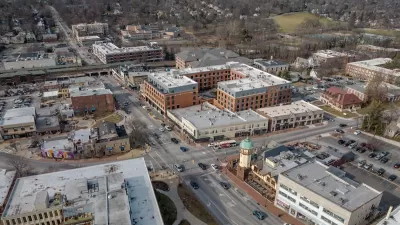Vancouver will attempt to address urban clutter with innovative multifunctional utility poles that house Wi-Fi and telecom services, as well as other amenities, designed by none other than famed novelist Douglas Coupland.
For many cities, streetscapes have developed into nothing short of obstacle courses for pedestrians. They are often thoughtlessly littered with amenities like parking meters, street lights, telephone poles, and cell towers.
One city--Vancouver, British Columbia--will soon attempt to de-clutter its sidewalks when it introduces the V-Pole (V for Vancouver). V-Poles are LED street lights that will house Wi-Fi and telecom services, link to charging stations for electric cars, and serve as parking payment stations.
With Vancouver's downtown inundated with a "forest" of cell towers from five major mobile carriers, novelist and visual artist Douglas Coupland saw an opportunity to change that. He worked with with Bell Labs and telecommunications giant Alcatel-Lucent to scale down telecom services into the more aesthetically pleasing V-pole.
With a need for new LED street lights and parking kiosks, Vancouver officials saw an opportunity to capitalize on the V-Pole. Add Wi-Fi and you have the Swiss Army Knife of utility poles.
What is more, the V-Pole is open source, so any city can develop a version of its own, incorporating services and technology deemed appropriate. The V-Pole's versatility and open source availability, and the increasing ubiquity of smartphones makes it a safe bet that other cities will follow Vancouver's lead by installing V-Poles of their own.
Who knows? Perhaps some day urban clutter will be a thing of the past
Thanks to Joe Batcheller
FULL STORY: Douglas Coupland-created ‘V-Pole’ may take high tech to the streets in Vancouver

Study: Maui’s Plan to Convert Vacation Rentals to Long-Term Housing Could Cause Nearly $1 Billion Economic Loss
The plan would reduce visitor accommodation by 25,% resulting in 1,900 jobs lost.

North Texas Transit Leaders Tout Benefits of TOD for Growing Region
At a summit focused on transit-oriented development, policymakers discussed how North Texas’ expanded light rail system can serve as a tool for economic growth.

Why Should We Subsidize Public Transportation?
Many public transit agencies face financial stress due to rising costs, declining fare revenue, and declining subsidies. Transit advocates must provide a strong business case for increasing public transit funding.

How to Make US Trains Faster
Changes to boarding platforms and a switch to electric trains could improve U.S. passenger rail service without the added cost of high-speed rail.

Columbia’s Revitalized ‘Loop’ Is a Hub for Local Entrepreneurs
A focus on small businesses is helping a commercial corridor in Columbia, Missouri thrive.

Invasive Insect Threatens Minnesota’s Ash Forests
The Emerald Ash Borer is a rapidly spreading invasive pest threatening Minnesota’s ash trees, and homeowners are encouraged to plant diverse replacement species, avoid moving ash firewood, and monitor for signs of infestation.
Urban Design for Planners 1: Software Tools
This six-course series explores essential urban design concepts using open source software and equips planners with the tools they need to participate fully in the urban design process.
Planning for Universal Design
Learn the tools for implementing Universal Design in planning regulations.
City of Santa Clarita
Ascent Environmental
Institute for Housing and Urban Development Studies (IHS)
City of Grandview
Harvard GSD Executive Education
Toledo-Lucas County Plan Commissions
Salt Lake City
NYU Wagner Graduate School of Public Service




























